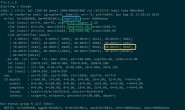本范例演示怎样通过c#中的XmlSerializer序列化一个普通对象
// This is the test class we want to
// serialize:
[Serializable()]
public class TestClass
{
private string someString;
public string SomeString
{
get { return someString; }
set { someString = value; }
}
private List<string> settings = new List<string>();
public List<string> Settings
{
get { return settings; }
set { settings = value; }
}
// These will be ignored
[NonSerialized()]
private int willBeIgnored1 = 1;
private int willBeIgnored2 = 1;
}
// Example code
// This example requires:
// using System.Xml.Serialization;
// using System.IO;
// Create a new instance of the test class
TestClass TestObj = new TestClass();
// Set some dummy values
TestObj.SomeString = "foo";
TestObj.Settings.Add("A");
TestObj.Settings.Add("B");
TestObj.Settings.Add("C");
#region Save the object
// Create a new XmlSerializer instance with the type of the test class
XmlSerializer SerializerObj = new XmlSerializer(typeof(TestClass));
// Create a new file stream to write the serialized object to a file
TextWriter WriteFileStream = new StreamWriter(@"C:\test.xml");
SerializerObj.Serialize(WriteFileStream, TestObj);
// Cleanup
WriteFileStream.Close();
#endregion
/*
The test.xml file will look like this:
<?xml version="1.0"?>
<TestClass xmlns:xsi="http://www.w3.org/2001/XMLSchema-instance" xmlns:xsd="http://www.w3.org/2001/XMLSchema">
<SomeString>foo</SomeString>
<Settings>
<string>A</string>
<string>B</string>
<string>C</string>
</Settings>
</TestClass>
*/
#region Load the object
// Create a new file stream for reading the XML file
FileStream ReadFileStream = new FileStream(@"C:\test.xml", FileMode.Open, FileAccess.Read, FileShare.Read);
// Load the object saved above by using the Deserialize function
TestClass LoadedObj = (TestClass)SerializerObj.Deserialize(ReadFileStream);
// Cleanup
ReadFileStream.Close();
#endregion
// Test the new loaded object:
MessageBox.Show(LoadedObj.SomeString);
foreach (string Setting in LoadedObj.Settings)
MessageBox.Show(Setting);




